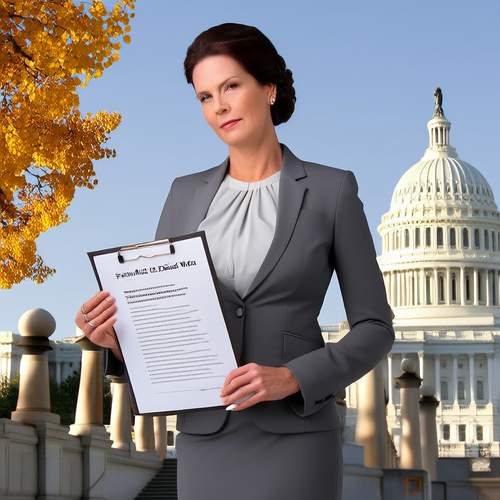The potential privatization of Fannie Mae and Freddie Mac, two government-sponsored entities (GSEs) that have long been cornerstones of the American housing market, has once again come to the forefront of political and economic discourse. President Donald Trump’s recent announcement on Truth Social that he is “giving very serious consideration” to bringing these entities public has reignited a debate that has persisted for over a decade. The implications of such a move are far-reaching, touching on issues of economic stability, housing affordability, and the role of government in the financial sector.
The Historical Context
To understand the significance of the current debate, it is essential to delve into the historical context of Fannie Mae and Freddie Mac. These entities, originally created by the government, were privatized before 2008 but maintained a special relationship with the US Treasury. Their role in the housing market is pivotal; they buy mortgages from lenders and repackage them for investors, ensuring a steady flow of capital into the housing market. This mechanism has been instrumental in keeping mortgage rates affordable and accessible for millions of Americans.
However, the 2008 financial crisis, triggered by a collapse in housing values and the subsequent failure of Lehman Brothers, brought these GSEs to the brink of insolvency. In response, the federal government placed Fannie Mae and Freddie Mac under conservatorship, a move intended to stabilize the housing market and prevent a complete meltdown. Since then, they have been managed by the Federal Housing Finance Agency (FHFA), with William Pulte at the helm since his confirmation in March.
The Economic Implications
The decision to privatize Fannie Mae and Freddie Mac is not merely a political maneuver; it has profound economic implications. Advocates for privatization argue that it would free these entities from the constraints of government oversight, allowing them to operate more efficiently and potentially generate greater returns for investors. This, in turn, could lead to increased capital for the housing market and, theoretically, lower mortgage rates for consumers.
However, economists warn that the path to privatization is fraught with risks. The current high mortgage rates and rising home prices already pose significant challenges for prospective homebuyers. Privatizing Fannie and Freddie could exacerbate these issues. Experts, including Mark Zandi, chief economist at Moody’s Analytics, estimate that privatization could cost the typical American taking out a new mortgage between $1,800 and $2,800 per year. This increase in borrowing costs could further limit access to homeownership, particularly for low- and middle-income families.
Moreover, the transition to a private model could spook investors who currently rely on the implicit government backing of Fannie Mae and Freddie Mac. Without this assurance, investors might demand higher returns, driving up mortgage rates and potentially destabilizing the housing market. The ripple effects of such a change could extend beyond the housing sector, impacting the broader economy and consumer confidence.
The Political Landscape
The debate over privatization is deeply entwined with the political landscape. Many of Trump’s allies within the Republican Party have long advocated for ending the government conservatorship of Fannie and Freddie. They argue that privatization aligns with principles of limited government intervention and free-market capitalism. However, past attempts to privatize these entities have faced significant opposition and have ultimately failed, as evidenced by Trump’s unsuccessful effort in 2019.
The current administration’s consideration of privatization is not occurring in a vacuum. It is part of a broader conversation about the role of government in the economy and the balance between market forces and regulatory oversight. The FHFA, under William Pulte’s leadership, has emphasized the need for a “significant study” on the potential impact of privatization on mortgage rates. This underscores the complexity of the issue and the need for careful consideration.
The Future Outlook
As President Trump consults with his cabinet members and contemplates the future of Fannie Mae and Freddie Mac, the timeline for any potential privatization remains uncertain. Financial analysts, such as Jaret Seiberg from TD Cowen, suggest that any serious attempt to spin off these entities might not occur until late 2026 or early 2027. This extended timeline reflects the intricate nature of the issue and the need for thorough analysis and preparation.
The path forward will require navigating a delicate balance between the desire for economic efficiency and the need to maintain housing affordability and market stability. It will also involve addressing the concerns of investors, homeowners, and policymakers alike. The potential benefits of privatization must be weighed against the risks of disrupting a system that, despite its flaws, has played a crucial role in supporting the American housing market.
The potential privatization of Fannie Mae and Freddie Mac is a complex issue with far-reaching implications for the American economy and housing market. As President Trump considers this significant step, it is crucial to weigh the potential benefits against the risks and to ensure that any transition is carefully managed to minimize disruption. The debate over privatization is not just about economics; it is also about the values that underpin American society and the role of government in ensuring economic stability and opportunity.
The decision to privatize Fannie Mae and Freddie Mac will be a defining moment in the ongoing conversation about the balance between market forces and government intervention. It will require careful consideration, thorough analysis, and a commitment to protecting the interests of all stakeholders. As the United States navigates this complex issue, the future of the housing market and the broader economy hangs in the balance.




















